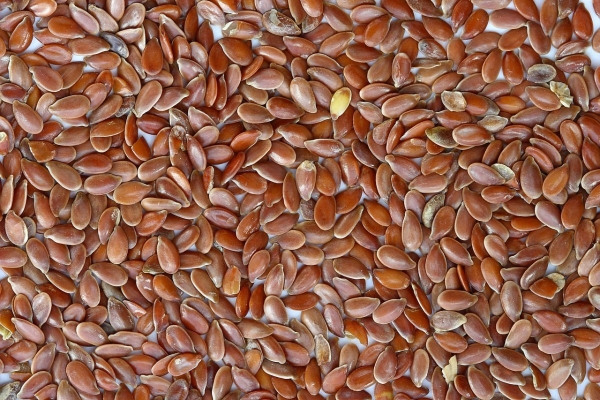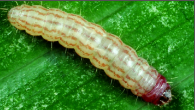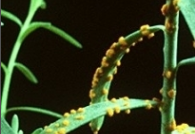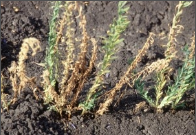K 2: It gives an average yield of 4qtl/acre. It has brown color big sized seeds, resistant to rust and tolerant to powdery mildew. The variety matures in 170-175 days. The seeds contain 46% oil content.
LC 54: It gives an average yield of 5.5qtl/acre. It has medium sized brown color seeds. The variety is tolerant to powdery mildew and rust. The variety matures in 160 days.
T 397: It gives an average yield of 4.5qtl/acre. It has small brown color seeds, spreading plant, rust and drought tolerant. The variety matures in 120-125 days. The seeds contain 44% oil content.
Neelam: It gives an average yield of 6qtl/acre. It has big sized seeds and has medium length. The variety is resistant to wilt, rust and drought. The plant matures in 120-125 days. The seed contains 44% oil content.
Heera: It gives an average yield of 5qtl/acre. It has brown big sized seeds, spreading plant. The variety is tolerant to rust, wilt and drought. The variety matures in 130-135 days and the seeds contain 43% oil content.
Jawahar 1: It gives an average yield of 3qtl/acre. It has medium sized brown color seeds which are moderately tolerant to rust, powdery mildew and wilt. The variety matures in 115-120 days and the seed contains 44% oil content.
Jawahar 17: In irrigated areas, it gives an average yield of 5qtl/acre and in rainfed areas, it gives an average yield of 3qtl/acre. It has medium sized brown color seeds which are moderately tolerant to rust, powdery mildew and wilt. The variety matures in 115-120 days and the seed contains 43% oil content.
Jawahar 23: It gives an average yield of 4qtl/acre. It has medium sized brown color seeds which are moderately tolerant to rust, powdery mildew and wilt. The variety matures in 120 days and the seed contains 43% oil content.
C 429: It gives an average yield of 4qtl/acre. It is moderately tolerant to powdery mildew and more tolerant to rust and wilt. The variety matures in 120 days and the seed contains 43% oil content.
Pusa 2: In irrigated areas, it gives an average yield of 5qtl/acre and in rainfed areas, it gives an average yield of 3qtl/acre. It has medium sized brown color seeds which are tolerant to drought and rust. The variety matures in 121-155 days and the seed contains 43% oil content.
Pusa 3: It gives an average yield of 5.5qtl/acre. It has medium sized brown color seeds. The variety matures in 150 days and the seed contains 42% oil content.
Garima: It gives an average yield of 6qtl/acre. It has medium sized brown color seeds. The variety is tolerant to rust, powdery mildew, alternaria and blight. The variety matures in 125-130 days and the seed contains 42% oil content.
Laxmi 27: It gives an average yield of 5qtl/acre. It has big sized brown color seeds. The variety is tolerant to powdery mildew. The variety matures in 110-125days and the seed contains 45% oil content.
Meera: It gives an average yield of 6qtl/acre. It bears purple-blue color flowers, brown seeds. The variety is tolerant to rust, wilt, powdery fungus, blight, and the seeds contain 42% oil content.
Parvati: It gives an average yield of 6.6qtl/acre. It bears purple-blue color flowers, light medium seeds. The variety is moderately resistant to blight, powdery fungus, wilt, and black pest. The seeds contain 42% oil content.














